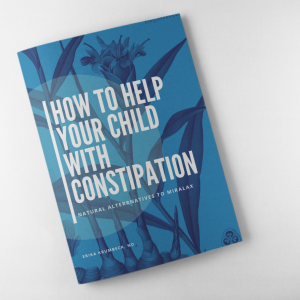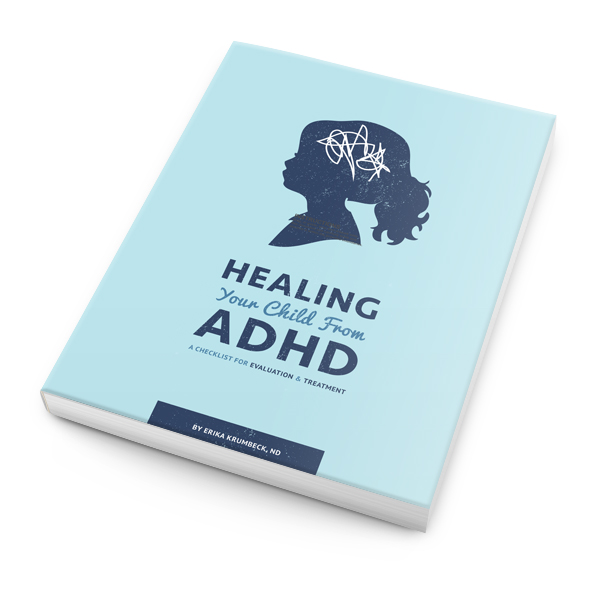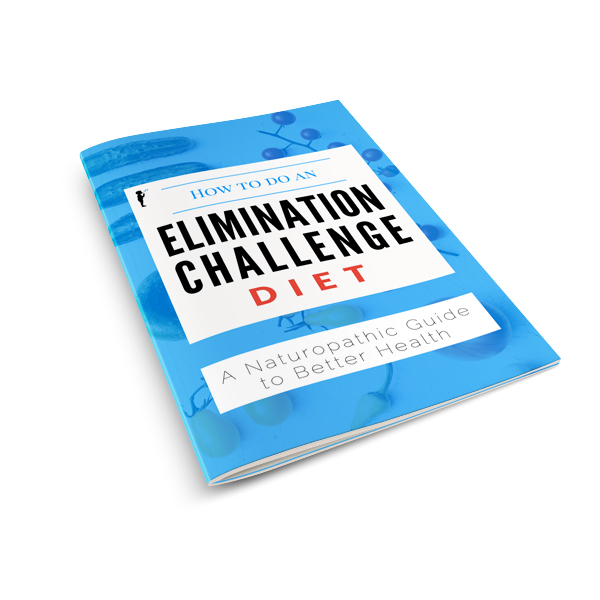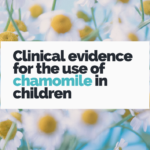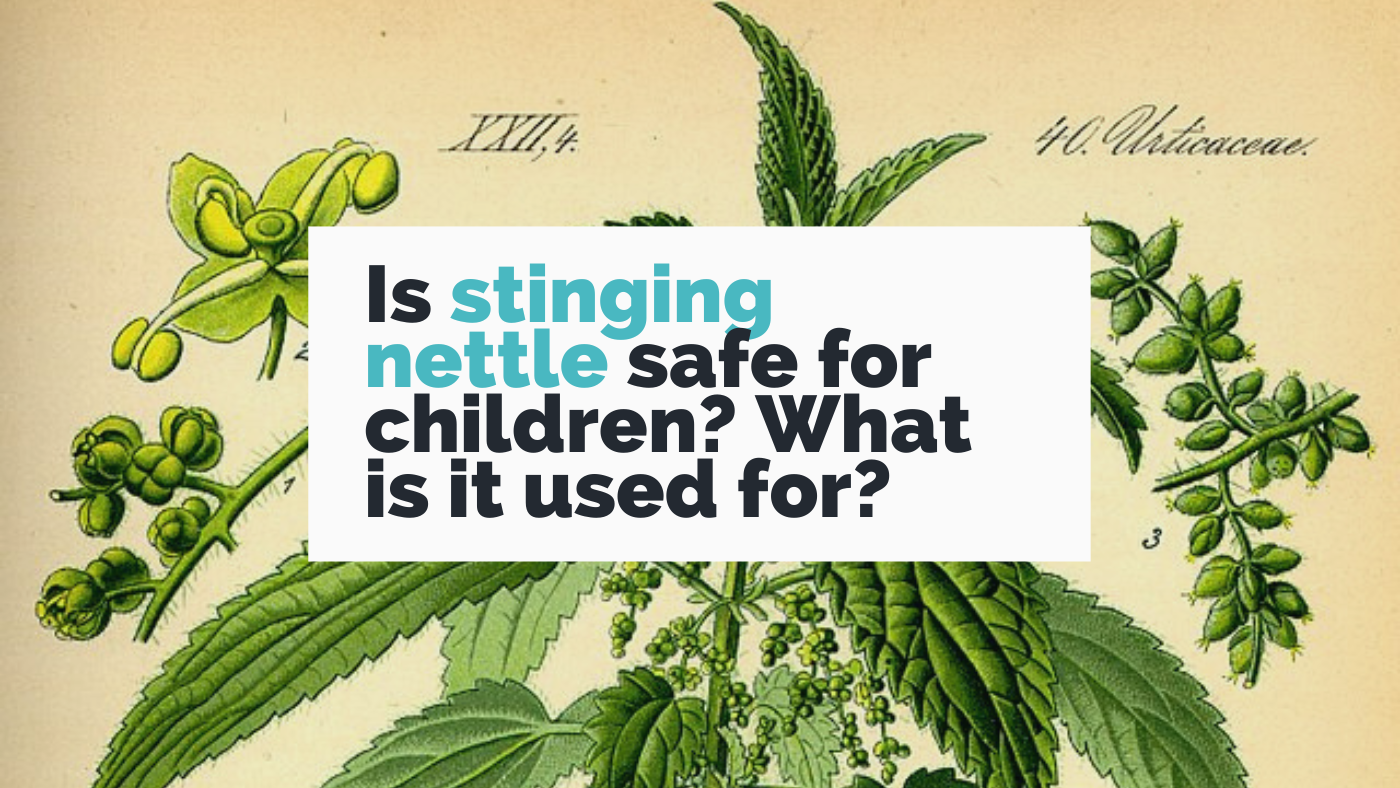
Is stinging nettle safe for children? What is it used for?
Urtica dioica, commonly referred to as stinging nettle, boasts a rich history of culinary, medicinal, clothing and ceremonial practices. Belonging to the Urticacea family, it is a perennial herbaceous plant native to Europe and Asia, now found in temperate regions worldwide and considered a weed in intensive agriculture due to its rapid growth and colonization.1 The plant can grow to heights of 2 meters and is covered with microscopically hooked hair-like protrusions that cause the stinging sensation it is named for. This skin-irritating effect is triggered by the release of biochemical substances like histamine and acetylcholine from its needle-like protrusions.2 The sting of the nettle is neutralized when the plants are dried. The Latin-derived genus name Urtica is believed to originate from uro and urere, meaning “to burn” and “to sting,” respectively. The species name dioica is derived from the dioecious nature of certain subspecies, indicating separate male and female plants.1
Traditional uses of stinging nettle
Throughout history, plants belonging to the Urtica genus have been esteemed as valuable food sources, providing sustenance and essential nutrients. Particularly in regions where vegetable options are limited, the plant is a staple in culinary practices. Stinging nettle, for example, is renowned for its rich content of calcium, iron, protein, phosphorus, carbohydrates and vitamins A and C. As a whole plant powder, Urtica dioca is known as a low-glycemic, but high-protein and nutrient dense supplementation for foods, including breads and pastas. Its tender young leaves and shoots are cooked much like any other leafy vegetable and because of its medicinal properties, it is a highly valued plant in many cultures.2,3
Nettle has been used as a natural remedy for its healing properties for over 2000 years. Within traditional medicine practices, Urtica dioca is esteemed for its diuretic properties and its efficacy in addressing respiratory ailments such as coughs and colds, as well as aiding in wound healing. One notable application is the practice of urtication, where its fresh stems and leaves are applied externally to mitigate joint discomfort.2
The enduring legacy of traditional medicinal applications of Uritca dioica persists across diverse cultures worldwide. In Nepal, for instance, the roots of this plant are harnessed for their multifaceted therapeutic properties, serving as diuretics, astringents, emmenagogues, and anthelmintic agents. In India, juice from its leaves finds utility in the treatment of epilepsy and local alleviation of boils and blisters. Meanwhile, in Italy, Urtica dioica is revered for its efficacy in addressing rheumatic conditions and gastrointestinal disorders.2
Although Urtica dioica is primarily known for its medicinal and culinary uses, it has also played a role in textiles due to its fiber content. Mature, fibrous stems have been used to make rope, cloth and fishing nets by indigenous cultures worldwide.4 A 2,8000 year old grave site in Lusehoj, Denmark held a bronze urn of human remains wrapped in cloth made of nettles.5 The Salish peoples of the Pacific Northwest are renowned for their nettle textiles, often using it as a warp (the longitudinal yarn or thread in weaving).5 Historical records indicate its utilization for textile production during the First World War in Austria and Germany.1 Nettles for textiles even make an appearance in folktales. In Hans Christian Andersen’s “The Wild Swans,” a sister breaks a spell that has turned her brothers into swans by crushing nettles and using the fibers to weave enchanted shirts, which hold the power to restore her brothers to their human forms.5
Urtica has also been used for animal nutrition, as a growth promoter and immuno-stimulant in fish species, and as a botanical pest and fungicide.3
Phytochemistry of Urtica dioica (stinging nettle)
Various species within the Urtica genus are renowned for their nutritional richness.6 While the composition and density of these constituents varies depending on the part used and harvesting time, the majority of studies focus on Urtica dioica leaves.7 The leaves are abundant in flavonoids, phenolic compounds, organic acids, vitamins, minerals, tannins, volatile compounds, fatty acids, polysaccharides, isolectins, sterols, terpenes and proteins. Protein constitutes approximately 30% of its dry mass, supplying essential amino acids crucial for human nutrition.2 Adhikari et al. conducted a comparative analysis of the nutritional properties of Urtica dioica leaf powder with barley and wheat flours, highlighting it superior levels of crude protein, fiber, fat and carbohydrates along with an energy value of 307 kcal/100g. The presence of flavonoids and phenolic compounds has shown to have significant antioxidant effects. Minerals, constituting about 20% of its dry mass, are also abundant, featuring notable levels of zinc, iron, potassium, nickel, and molybdenum.2 Histamine, serotonin, and acetylcholine are highly concentrated within the fresh stinging hairs found on the leaves of Urtica dioica.8
Urtica dioica root is rich in lectins, lignans, polysaccharides and sterols, along with minerals like calcium, manganese, copper, magnesium and zinc. Flavonoids such as kaempferol-3-O-rutinoside, myricetin, quercetin, and isorhamnetin, as well as lignans like isolariciresinol, pinoresinol, neoolivil, secoisolariciresinol, dehydrodiconiferyl alcohol and 3,4-divanillyltetrahydrofuran are found in the root. Urtica dioica agglutinin (UDA), a polypeptide rich in glycines, cysteine and tryptophan, is also present. Phytosterols including stigmasterol, campesterol, stigmast-4-en-3-on, hecogenin and sitosterol are among the compounds found in the roots.3
Comparative studies have shown that flowers, seeds and roots of Urtica dioica exhibit greater antioxidant potential than its leaves. Nonetheless, leaves are often favored in research due to their widespread culinary usage and relative ease for harvesting.1
Herbal medicines like Urtica dioica exhibit potent anti-inflammatory properties by targeting key inflammation pathways, inhibiting inflammatory prostaglandins through cyclooxygenase (COX)-1 and COX-2 and preventing mast cell degranulation by inhibiting mast cell trypatase.9 Research shows that extracts from various parts of the plant, particularly dichloromethane extracts, demonstrate significant anti-inflammatory activity with minimal cytotoxicity.9 Moreover, ethanol extracts of Urtica dioica have been found to suppress the release of inflammatory cytokines like TNF-a and IL-1B.9 Additionally, Urtica dioica possesses antioxidant properties, shielding cells from reactive oxygen species damage. Flavonoids and phenolic compounds present in the plant act as natural antioxidants, with various sassays confirming its significant antioxidant activity surpassing standard antioxidants like ascorbic acid and a-Tocopherol.9 In vivo studies further support its antioxidant benefits, demonstrating increased expression of antioxidant genes and suppression of lipid peroxidation, underscoring its potential therapeutic benefits. Several in vivo studies have also demonstrated the antioxidant benefit of Urtica dioica in different organs including heart, lung, muscle, kidney, ovary, uterus, blood and brain.1 These anti-inflammatory and antioxidant properties are crucial for managing pediatric conditions, as they help alleviate inflammation and protect against oxidative stress, both of which play significant roles in childhood disease.
| Daily value (%) | ||
| Vitamins | Thiamin (B1) 0.0 mg | 1 |
| Niacin (B3) 0.4 mg | 2 | |
| Choline 17.4 mg | 3 | |
| B6 0.1 mg | 8 | |
| Riboflavin (B2) 0.2 mg | 12 | |
| Vitamin A 2011.0 IU | 67 | |
| Vitamin K 498.6 ug | 416 | |
| Minerals | Selenium 0.3 ug | 1 |
| Zinc 0.3 mg 0.3 mg | 2 | |
| Phopshorus 71.0 mg | 7 | |
| Copper 0.1 mg | 8 | |
| Potassium 334.0 mg | 9 | |
| Iron 1.6 mg | 9 | |
| Magnesium 57.0 mg | 14 | |
| Manganese 0.8 mg | 34 | |
| Calcium 481.0 mg | 37 | |
| Calories | Carbohydrates 7 g | 2 |
| Fiber 7 g | 24 | |
| Protein 2.4 g | 5 | |
| Table 1: Nutritional Composition of U. dioica3 | ||
| Chemical Group | Compounds |
| Flavonoids | Amentoflavone, apiin, apigenin, apigenin 7-O-β-d-glucoside, baicalin, baicalein, catechin, epicatechin, epigallocatechin gallate, chrysoeriol, genestein, isorhamnetin, kaempferol, keampferol 3-O-β-d-glucoside, luteolin, luteolin 7-O-β-d-glucoside, myrecetin, naringenin, quercetin, quercetin 3-O-β-d-glucoside, quercetin 3-O-β-d-galactoside, rutin, vitexin |
| Phenolic Acids | Hydroxybenzoic acid derivativesGallic acid, vanillic acid, syringic acid, protocatechuic acid, gentisic acidCinnamic acid derivativesCinnamic acid, caffeic acid, p-coumaric acid, ferulic acid, chlorogenic acid, sinapic acid |
| Amino Acids | Alanine, γ-aminobutyric acid (GABA), glutamic acid, isoleucine, leucine, phenylalanine, proline, tyrosine, valin |
| Carotenoids | β-Carotene, lutein isomers, neoxanthin, violaxanthin |
| Organic Acids | Acetic acid, citric acid, formic acid, malic acid, succinic acid |
| Fatty Acids | Arachidic acid, arachidonic acid, behenic acid, dodecendioic acid, euric acid, palmitic acid, palmitolic acid, stearic acid, tricosanoic acid, lauric acid, etc |
| Table 2: Bioactive chemical constituents of leaves of Urtical Dioica 2 | |
Safety of stinging nettles in children, pregnancy and lactation
The extensive historical consumption of Urtica dioica as a vegetable supports the safety for long-term dietary supplementation or therapeutic applications. While generally regarded as safe, occasional side effects such as mild stomach upset, fluid retention, sweating, diarrhea and skin reactions like hives or rash (primarily from topical exposure) may occur. Caution is advised when handling the nettle plant, as contact can induce an allergic rash in susceptible individuals. There are also a number of medications that may interact with the use of Urtica dioica including NSAIDs, lithium, hypoglycemic drugs, diuretics, hypertension medications and blood thinning agents.10
Urtica dioica has also been used as a galactagogue for centuries and is considered pregnancy class B2 (no adequate studies in humans, but animal studies did not demonstrate risk to the fetus) and lactation class C (risk cannot be ruled out) by Mill & Bones.11 It is important to note that Urtica dioica has been known to alter the menstrual cycle and has historically been used as an emmenagoge in some cultures. Women of child bearing years should be cautious given this history. However, my personal experience as a midwife’s apprentice has shown Urtica dioica to be safe in the second and third trimesters as well as postpartum while lactating. I have witnessed many midwives use Urtica dioica decoctions to help support serum mineral levels and nutritional status during pregnancy and postpartum.
As far as I could find, there is no research to support the use of Urtica dioica in children and as such a specific dose has not yet been established. With that being said, I believe Urtica dioica has powerful potential to help out our kiddos, especially regarding inflammatory conditions, and recommend clinicians trial treatments and discontinue if any adverse reactions occur.
Medicinal uses of stinging nettle
Urtica dioica presents promising potential for pediatric medicine due to its diverse therapeutic actions. Renowned for its anti-inflammatory, antioxidant, hypoglycemic, antinuclear, antibacterial properties, and robust nutrient profile this botanical remedy offers a natural and holistic approach to addressing various health concerns in children. From aiding growth and development, combating infections and supporting our littles dealing with autoimmune or other chronic diseases, stinging nettle may offer a safe and effective alternative to conventional treatment in children’s health and wellbeing. While it has been researched for a variety of conditions including insulin resistance, cardiovascular health, and arthritis, Urtica dioica truly shines when it comes to its effect on the immune system, particularly with allergic rhinitis, asthma and inflammatory bowel disease.
Allergic Rhinitis
Allergic rhinitis is a common condition in the pediatric population characterized by inflammation of the nasal mucosa due to allergen exposure, leading to symptoms like nasal congestion, sneezing, itching, and rhinorrhea. Research has demonstrated that those with allergic reactions experience declines in verbal learning, slower decision-making and psychomotor speed and lower positive affect during allergy season compared.12
While antihistamines, decongestants and corticosteroids are often used for symptom management, their long-term use poses significant risk, especially in younger patients. Children are more susceptible to adverse effects such as convulsions, nightmares and behavioral changes when using these medications. Over-the-counter cough and cold medicines are not recommended for children under 4 years due to potential life-threatening side effects. Certain antihistamines like hydroxyzine and some corticosteroids have been associated with birth defects and other complications during pregnancy. Long-term use of corticosteroids, whether topical or oral, can lead to various systemic side effects such as thinning of skin, osteoporosis and growth delay in children. As such, safer alternatives like Urtica dioica, are being explored for their potential efficacy in managing allergic rhinitis either as primary therapy or in conjunction with conventional methods. Such natural therapies offer a promising avenue for reducing morbidity associated with allergic rhinitis and other conditions associated with histamine and mast cell production while minimizing the risks posed by conventional pharmaceuticals, particularly in pediatric patients. 8,13
A 2017 randomized controlled trial assessing the efficacy of Urtica dioica in managing allergic rhinitis symptoms showed significant improvement in symptom severity based on Sino-Nasal Outcome Test 22 (P<0.001). There was also notable reduction in nasal smear eosinophil count after the nettle treatment (P <0.01) as well as there was a significant difference in post-treatment changes of mean IFN y levels between study and placebo group (P=0.017).14
You may remember from the phytochemistry section above that Urtica dioica contains histamine, serotonin and acetylcholine in the stinging hairs. While it may seem counterintuitive for a plant with these mediators to be used in treating allergic rhinitis, histamine also plays a role in modulating the immune response as a local hormone (autacoids). In fact, histamine injections have been effectively used to treat various allergic conditions such as headaches, migraines, allergic arthritis and cold urticaria with associated anaphylaxis. Interestingly, studies have shown that low plasma histamine levels, rather than high, are associated with severe allergic reactions during antigen inhalation.8
Let’s take a look at some of the in vivo research that may shed a light on how these outcomes play out in our bodies. A 2009 study demonstrated that Urtica dioica exhibits inhibition of various inflammatory processes associated with seasonal allergies. These include antagonist and negative agonist activity against Histamine-1 (H1) receptor, inhibition of mast cell tryptase to prevent degranulation and release of pro-inflammatory mediators, and suppression of prostaglandin formation through inhibition of Cyclooxygenase-1 (COX-1), COX-2 and Hematopoietic Prostaglandin D2 synthase, key enzymes in proinflammatory pathways.15
Asthma
Asthma is a chronic respiratory condition characterized by airway inflammation and hyperresponsiveness to allergens, involving the activation of mast cells and release of proinflammatory mediators like histamine. This inflammatory reaction narrows airways, leading to recurrent episodes of wheezing, breathlessness, chest tightness and coughing. Among pediatric populations, asthma poses a significant challenge for primary care physicians and families alike. Children with asthma often experience frequent exacerbations, which can disrupt their daily activities, school attendance, and overall quality of life. Severe exacerbations may even necessitate hospitalization, posing additional concerns for both families and health care providers. Managing pediatric asthma requires a multifaceted approach involving medication management, environmental control measures, and ongoing monitoring of symptoms and lung function. However the variable nature of asthma symptoms and triggers, combined with the difficulty in predicting and preventing exacerbations, pose significant challenges for effectively controlling the condition. In this context, Urtica dioica, may be an option for clinicians seeking alternative ways to help prevent asthma attacks altogether.
In vivo pharmacological evaluations of herbal drugs, including Urtica dioica, revealed notable antihistaminic, anti-inflammatory, and mast cell stabilizing effects. It significantly reduced milk-induced leukocytosis and eosinophilia in rat models (p <0.05), while also providing protection against clonidine-induced catalepsy (p <0.05). These findings highlight Urtica dioica’s potential as an antihistamine agent, indicating its effectiveness in various asthma-related pathways.16
Further in vivo investigations have corroborated the potential benefit of Urtica dioica for asthma management. A 2020 study evaluating the protective effects of Urtica dioica seeds on allergic asthma, mice sensitized and challenged with ovalbumin (OVA) were treated with nettle seed extract. The results indicated that nettle seed significantly (p<0.05) reduced eosinophil levels in blood and bronchoalveolar lavage fluid (BALF), as well as Th2 cytokines IL-5, IL-13 and IL-33. Moreover, mRNA expression of IL-4, IL-5, IL-13 and MUC5 were decreased, along with reductions in inflammatory cell infiltration, goblet-cell hyperplasia, and mucus hypersecretion in lung tissue.17
A 2017 study aimed to assess the in vivo anti-asthmatic and antioxidant activities of Urtica dioica leaf extract. Adult male Winstar rats were divided into four groups and treated accordingly. Results showed that UD extract significantly inhibited eosinophilia increased in BALF (-60%) and reduced levels of leukocytes (-32.75%) and lymphocytes (-2922%) in serum, demonstrating its effectiveness in suppressing inflammatory cell recruitment. Additionally, UD treatment significantly diminished lipid peroxidation in lung tissue (-48.58%), indicating its antioxidant properties. These findings suggest that UD extract may hold promise as a protective agent against airway inflammation.18
Inflammatory Bowel Disease
Inflammatory bowel disease (IBD), including ulcerative colitis, are pesky conditions causing inflammation and ulcers in the colon. Managing IBD in children adds further complexity, disrupting daily life with symptoms like abdominal pain, diarrhea, and weight loss. Treatment involves a combination of medications and lifestyle adjustments, but finding the ideal therapy for each patient is challenging. This task is even more daunting when treating children, as it requires balancing symptom management and ensuring proper growth and development. Stinging nettle may offer a promising option for managing IBD, as its immune-modulating properties could help alleviate inflammation and support intestinal health in pediatric patients. With its nutrient dense profile, it may also be an ideal food source to help kids maintain adequate nutrition and weight gain.
In an effort to understand its immune-modulating mechanisms, research has revealed the presence of phenolic acids and flavonol gycosides in aerial parts, while lignans were found in the root. Extracts from different parts selectively inhibited COX and lipoxygenase pathways in human platelets, while roots, being more effective against thromboxane production and herbs targeting the 12-lipoxygenase pathway. Urtica dioica extracts promoted release of immune-regulating molecules from intestinal epithelia cells preserving epithelial integrity and enhancing defense mechanisms. Root extracts also reduced inflammation-induced tissue damage in intestinal epithelial cells. These findings suggest Urtica dioica’s potential for developing phytopharmaceuticals or supplements for managing inflammatory diseases.19
A 2023 study investigated the prophylactic coloprotective effect of aqueous extract of Urtica dioica (AEUD) on dextran sulfate sodium (DSS)-induced ulcerative colitis in rats as compared to standard mesalazine (MESA) treatment. Results showed that AEUD treatment significantly ameliorated disease activity index (p <0.01), ulcer scores (p <0.01), colon length shortening (p <0.01), colonic histopathological changes (p <0.01) and hematological and biochemical modifications associated with UC. AEUD treatment notably suppressed DSS-induced UC by reducing oxidative stress via lowering MDA/H202 production and stimulating the effect of enzyme antioxidants as well as attenuating inflammation by decreasing CRP levels by 79.5% between DSS and DSS+AEUD-50 groups compared to the MESA group (p <0.01). These findings suggest that AEUD exerts coloprotective effect against UC through its anti-inflammatory and antioxidant capabilities.20
A 2017 double-blind, placebo-controlled, randomized clinical trial aimed to investigate the effects of Urtica dioica leaf extract on inflammatory markers and quality of life in patients with inflammatory bowel disease (IBD). After 12 weeks of treatment, the nettle group showed significant reductions in serum high-sensitivity C-reactive protein levels and platelet count (p=0.012 and p=0.023 respectively), alongside a significant increase in superoxide dimutase activity (p=0.002) and quality of life (p<0.001) compared to the placebo group.21
With its potential to suppress oxidative stress and inflammation, alongside its nutrient-rich profile, Urtica dioica emerges as a valuable option for pediatric IBD management. Its immune-modulating properties, supported by phenolic acids and flavonol glycosides, have demonstrated effectiveness in reducing inflammation and preserving intestinal health. Studies have shown significant improvement in disease activity and quality of life in both animal models and clinical trials.
Conclusion
Urtica dioica, commonly known as stinging nettle, presents itself as a versatile botanical with a rich historical background and promising therapeutic potential. From a clinical perspective, the comprehensive exploration of Urtica dioica reveals noteworthy attributes, including its robust nutritional composition and pharmacological properties. These encompass anti-inflammatory, antioxidant and immune modulating effects, all of which hold relevance in addressing various pediatric health concerns such as allergic rhinitis, asthma and inflammatory bowel disease.
References
1. Jaiswal V, Lee HJ. Antioxidant Activity of Urtica dioica: An Important Property Contributing to Multiple Biological Activities. Antioxidants (Basel). 2022;11(12):2494. doi:10.3390/antiox11122494
2. Devkota HP, Paudel KR, Khanal S, et al. Stinging Nettle (Urtica dioica L.): Nutritional Composition, Bioactive Compounds, and Food Functional Properties. Molecules. 2022;27(16):5219. doi:10.3390/molecules27165219
3. Bhusal KK, Magar SK, Thapa R, et al. Nutritional and pharmacological importance of stinging nettle (Urtica dioica L.): A review. Heliyon. 2022;8(6):e09717. doi:10.1016/j.heliyon.2022.e09717
4. Ngan J. Reclaiming a Tradition of Weaving with Nettle. Asparagus Magazine. Accessed February 20, 2024. https://asparagusmagazine.com/articles/artist-sharon-kallis-is-reclaiming-a-tradition-of-weaving-and-making-clothing-from-local-stinging-nettle
5. Alexander R. NETTLES FOR CLOTH AND SUSTAINABLE TEXTILES.
6. Adhikari BM, Bajracharya A, Shrestha AK. Comparison of nutritional properties of Stinging nettle (Urtica dioica) flour with wheat and barley flours. Food Sci Nutr. 2015;4(1):119-124. doi:10.1002/fsn3.259
7. Paulauskienė A, Tarasevičienė Ž, Laukagalis V. Influence of Harvesting Time on the Chemical Composition of Wild Stinging Nettle (Urtica dioica L.). Plants (Basel). 2021;10(4):686. doi:10.3390/plants10040686
8. Thornhill SM, Kelly AM. Natural Treatment of Perennial Allergic Rhinitis. Allergic Rhinitis. 2000;5(5).
9. Devkota HP, Paudel KR, Khanal S, et al. Stinging Nettle (Urtica dioica L.): Nutritional Composition, Bioactive Compounds, and Food Functional Properties. Molecules. 2022;27(16):5219. doi:10.3390/molecules27165219
10. Stinging nettle Information | Mount Sinai – New York. Mount Sinai Health System. Accessed February 27, 2024. https://www.mountsinai.org/health-library/herb/stinging-nettle
11. Mills S, Bone K. The Essential Guide to Herbal Safety. 1st ed. Churchill Livingston; 2005.
12. Marshall PS, Colon EA. Effects of allergy season on mood and cognitive function. Ann Allergy. 1993;71(3):251-258.
13. MD DLT. Long Term Effects of Taking Allergy Medications. News-Medical. Published September 11, 2019. Accessed February 27, 2024. https://www.news-medical.net/health/Long-Term-Effects-of-Taking-Allergy-Medications.aspx
14. Bakhshaee M, Mohammad Pour AH, Esmaeili M, et al. Efficacy of Supportive Therapy of Allergic Rhinitis by Stinging Nettle (Urtica dioica) root extract: a Randomized, Double-Blind, Placebo- Controlled, Clinical Trial. Iran J Pharm Res. 2017;16(Suppl):112-118.
15. Roschek Jr. B, Fink RC, McMichael M, Alberte RS. Nettle extract (Urtica dioica) affects key receptors and enzymes associated with allergic rhinitis. Phytotherapy Research. 2009;23(7):920-926. doi:10.1002/ptr.2763
16. Shahzad N, Alzahrani AR, Ibrahim IAA, et al. In Vivo Pharmacological Testing of Herbal Drugs for Anti-Allergic and Anti-Asthmatic Properties. J Pharm Bioallied Sci. 2021;13(4):380-386. doi:10.4103/jpbs.jpbs_454_21
17. Irani M, Choopani R, Esmaeili S, Dargahi T, Athari SM, Athari SS. Effect of nettle seed on immune response in a murine model of allergic asthma. Revue Française d’Allergologie. 2020;60(5):417-422. doi:10.1016/j.reval.2020.03.007
18. Zemmouri H, Sekiou O, Ammar S, et al. Urtica dioica attenuates ovalbumin-induced inflammation and lipid peroxidation of lung tissues in rat asthma model. Pharm Biol. 2017;55(1):1561-1568. doi:10.1080/13880209.2017.1310905
19. Francišković M, Gonzalez-Pérez R, Orčić D, et al. Chemical Composition and Immuno-Modulatory Effects of Urtica dioica L. (Stinging Nettle) Extracts. Phytother Res. 2017;31(8):1183-1191. doi:10.1002/ptr.5836
20. Dakhli N, Rtibi K, Arrari F, Ayari A, Sebai H. Prophylactic Coloprotective Effect of Urtica dioica Leaves against Dextran Sulfate Sodium (DSS)-Induced Ulcerative Colitis in Rats. Medicina (Kaunas). 2023;59(11):1990. doi:10.3390/medicina59111990
21. Nematgorgani S, Agah S, Shidfar F, Gohari M, Faghihi A. Effects of Urtica dioica leaf extract on inflammation, oxidative stress, ESR, blood cell count and quality of life in patients with inflammatory bowel disease. Journal of Herbal Medicine. 2017;9:32-41. doi:10.1016/j.hermed.2017.05.002


